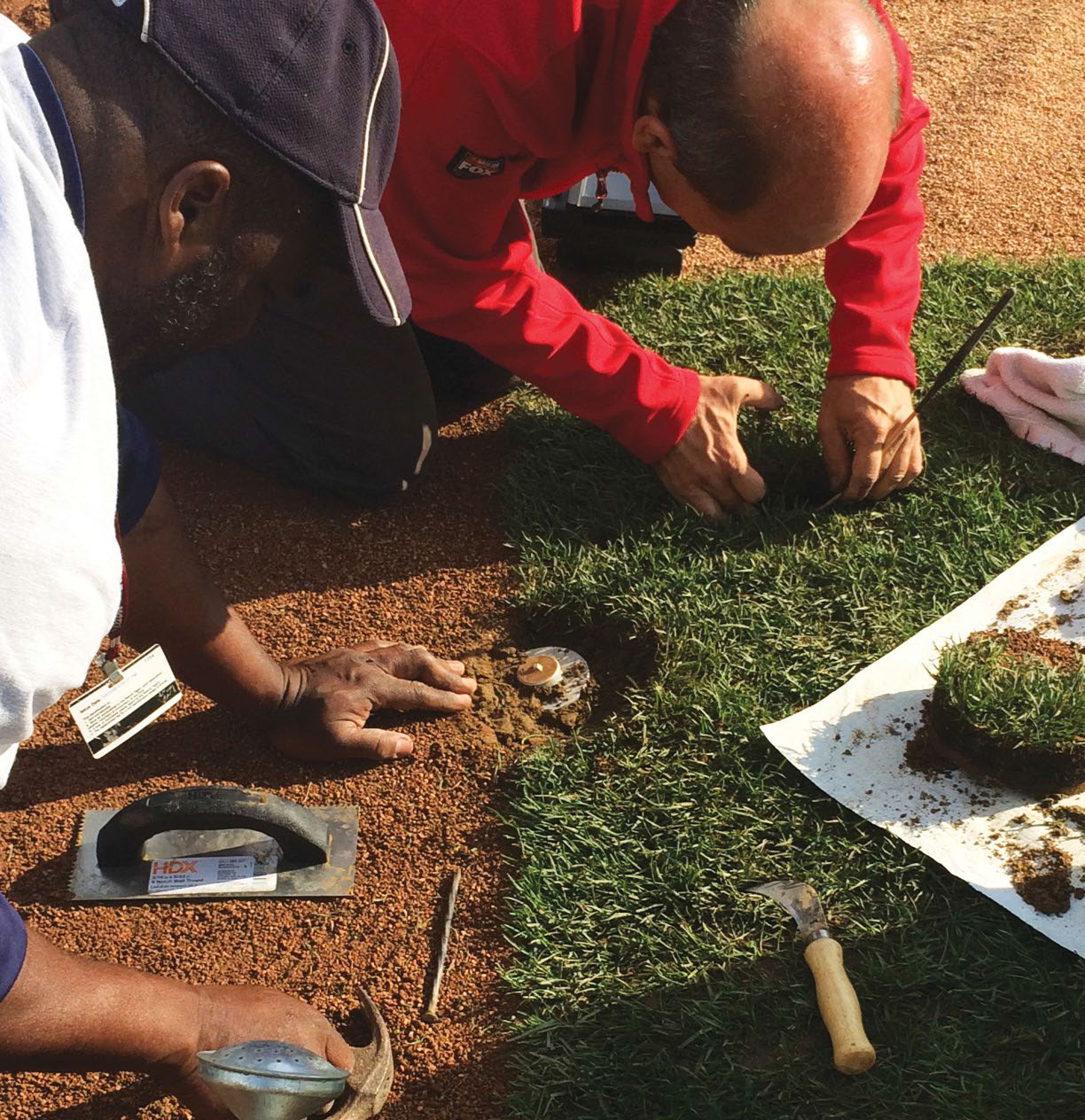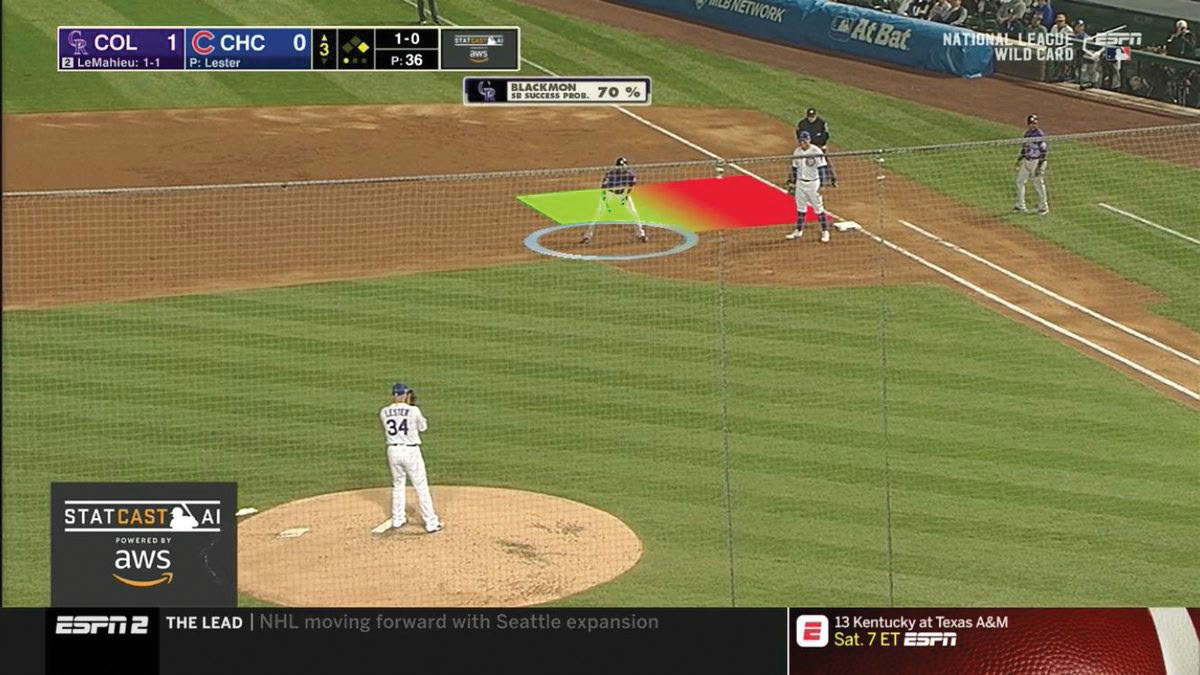Fox, ESPN Gear Up for 2019 MLB
BALTIMORE—There’ll be more to come.
Those words provide an easy answer to anyone who’s wondering what’s new on the technical palette for televised baseball in 2019.

Fox Sports, which will carry regional broadcasts on Saturdays, the All-Star Game and key late- and post-season matchups, plans to debut new technology as the season progresses; ESPN will do likewise with its staple “Sunday Night Baseball” and its Wednesday night broadcasts, with several notable games during the first half of the season.
Both networks also plan to further rely on graphics and analytics as they contemplate what’s next.
MID-SEASON REVEAL
Fox Sports’ focus will make its early regular season broadcasts “a testing ground for larger games,” said Michael Davies, senior vice president, field operations. “The All-Star Game [presents a great opportunity] for us” because it allows the opportunity for two-way conversations with players in the field, cameras on base coaches and talent interviewing game personnel during preinning warm-ups,” etc.
Part of what will define the Fox approach is “how we can harness data from Major League Baseball to track the players and the ball,” Davies said, adding that the network uses Computer Vision, Statcast and PitchTrak. “This year, we’ll come up with ways to share that data: trajectory of a hit, the spin of a pitch, etc. It’s about taking complex data and weaving it, with graphics and augmented reality, to tell the viewers the story.”
Get the TV Tech Newsletter
The professional video industry's #1 source for news, trends and product and tech information. Sign up below.
Another key to Fox broadcasts will be the use of super slo-mo. “Baseball is incredibly interesting when you slow it down,” he said, noting the network’s use of the Sony HDC-4800 for NASCAR and NFL, “as well as the Red Camera, Sony PMW-F55 and other cameras that are typically used in films. They allow us to weave drama into the events. Viewers will see more of that as we move toward the All-Star Game.”
Another evolving aspect with cameras simply concerns placement, which is now often between blades of grass or in the dirt, since some have gotten so small.
They can end up in front of home plate, looking back at the hitters; and in foul territory by first base, directed at the bag. “That means good views of slides and [pick-off] throws from pitchers,” Davies said. “It even pivots. It’s so tiny that it points up through a prism. Now, we’re working on new lensing.”
Originated as the “Gopher Cam” in Fox’s NASCAR coverage, it’s kept inconspicuous. “It’s a cool shot when it works,” he said. “It used to be the size of an ammo box, but that technology has shrunk to the size of the wireless gear inside of it.”
NEW SOUNDS
Viewers seeing what they don’t normally see would be for naught were it not accentuated by hearing what they don’t usually hear. The Fox Sports audio team, led by Senior Audio Mixer Joe Carpenter, has been busy burying mics to make that happen.
“We do something new every year,” Carpenter said, such as experimenting with mics in the grass, among other different approaches.
The mics are tiny elements, like the Acquos from Quantum. “The transmitter is the size of a half-pack of cigarettes and the mics are smaller than a Q-tip. We take a flat spade and dig a small slot at 45 degrees, insert the mic and push the turf back on it. They’re durable and weatherproof,” Carpenter said, adding that the crew “has had to use metal detectors to find them at times.”
To date, Fox Sports has used as many as six Acquos mics in the outfield; two each near the third base/shortstop and the first base/second base holes, at the lip of the outfield grass; plus a pair in front of the pitcher’s mound to catch notoriously noisy grunters like Rich Hill [Los Angeles Dodgers] and Max Scherzer [Washington Nationals] in the act. Also, MLB now allows Fox to use parabolic dishes down the left field and right field lines.
This season’s plan, said Carpenter, is to simply increase the number of mics during a game. “We used as many as 14 in 2017 and last year, and want to kick it up to maybe 20,” he said. “By Game 7 of the 2018 World Series, we were using 80 effects mics” that were all across the outfield wall and along the foul lines, with an array for crowds, high first, high third, the announcer’s booth, the batter’s eye and the foul poles.
The sound crew will take the next step by “micing the players, who have been taped, live for the post season,” he said. “We know that there’s trust factor there; we want to advance the athleticism of the game without exposing strategy.”
GOING GLOBAL
In Bristol, Conn., Phil Orlins, ESPN senior coordinating producer, is also all about live mics on the players. He related a recent Boston Red Sox-Pittsburgh Pirates Grapefruit League broadcast where Sox players Jackie Bradley Jr. and Mookie Betts where interviewed during play, as was Sox Manager Alex Cora, as he talked with his brother, Pirates Third Base Coach Joey Cora, during the action.
“For every game, we bury mics around first and home. That’s gotten much more important in recent years,” said Orlins. “I think we’re the only ones who push it aggressively.”
ESPN, which is in its 30th year with MLB, will present a diverse schedule during 2019, which started with two late March international contests from the Tokyo Dome featuring the Seattle Mariners and the Oakland A’s. The games were broadcast in conjunction with MLB International and hosted by Japanese networks that provided ESPN with the world feed “that we’ll enhance with two cameras, for our announcers and cutaways, as well as graphics,” Orlins said.
That beat will go on until mid-season for ESPN, with more international broadcasts from Monterrey, Mexico (two games, four teams) and MLB’s first two games in London (New York Yankees vs. Red Sox); as well as domestic contests in Omaha, Neb., before the College World Series (Kansas City Royals vs. Detroit Tigers) and on “Sunday Night Baseball” during the Little League World Series, from Williamsport, Pa. (Pirates vs. Chicago Cubs).
“Those are the special games,” Orlins said, noting that the approach to each “will concern importance of the game and costs.”
SEE IT NOW
Another key area for ESPN will be working with two types of virtual graphics.
“The first is live-virtual, where we key graphics of shift defenses with the percentage of balls hit over the field with some newer metrics that we used during the 2018 National League Wild Card Game between the Cubs and the [Colorado Rockies],” Orlins said, “like the real time percentage of runners successfully stealing second, and how that percentage increases as the runner takes a bigger lead.”

The other aspect of the virtual presentation concerns animation. “Last year, for instance, we created an animated version of the ‘K Zone,’ which lit up for strikes,” Orlins said. “Then, we started using it more for data analysis, like showing how [New York Yankees pitcher] Luis Severino’s slider improved from 2016 to 2018, by illustrating how many more inches it dropped.”
Seeing Severino’s uptick from two years ago made for “a much higher impact,” he said, also noting how “[Washington Nationals pitcher] Sean Doolittle’s four-seam fastball at 94 miles per hour drops four more inches than that of the average pitcher. “That type of thing has always been suspected. Now, we have proof.”
Viewers may also notice when a pitcher loses a few MPH on his fastball, “but it’s more than a radar gun [reading],” Orlins said. “It can be a decrease in spin rate and decrease in movement, so it’s more than velocity we’re talking about.”
ESPN interprets data “with strong, understandable graphics,” he said. “I’ve talked to our Statcast folks about making the information relatable for the layman, they’ve done that.”
Orlins also discussed the split screen that was also used during last year’s NL Wild Card Game. “That offered quite the revelation. The regular game was on ESPN and the Statcast special on ESPN 2,” he said, noting that about 12 percent of the audience stayed with ESPN2 for the whole game. “We’ll be doing more of that this year,” he said. “When we’re using one channel, we have to weigh our options before we offer what the viewers may or may not like, but using two broadcasts solved that issue.
With the heightening importance of analytics, Orlins pointed to another trend that may be around the corner.
“One day,” he said, “we could see an analytics guy join the broadcast team.”
Mark R. Smith has covered the media industry for a variety of industry publications, with his articles for TV Technology often focusing on sports. He’s written numerous stories about all of the major U.S. sports leagues.
Based in the Baltimore-Washington area, the byline of Smith, who has also served as the long-time editor-in-chief for The Business Monthly, Columbia, Md., initially appeared in TV Technology and in another Futurenet publication, Mix, in the late ’90s. His work has also appeared in numerous other publications.

